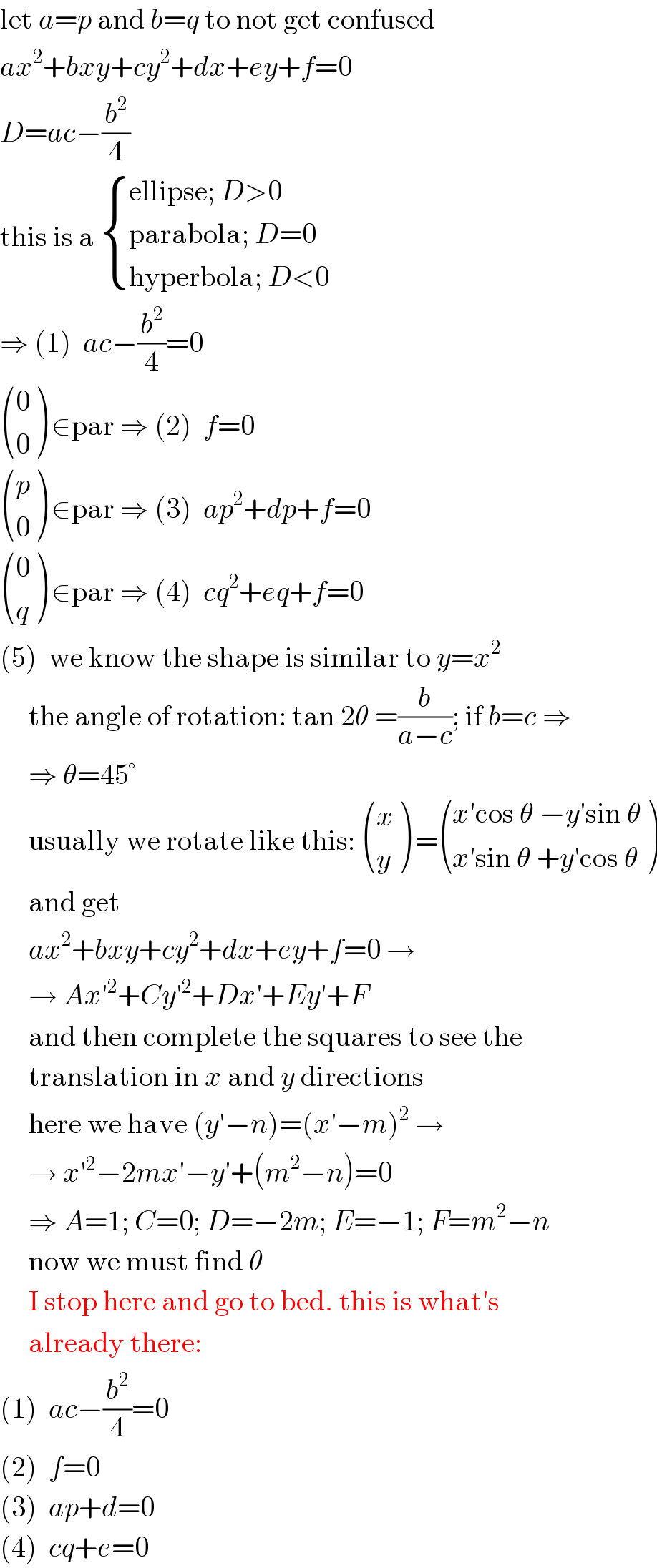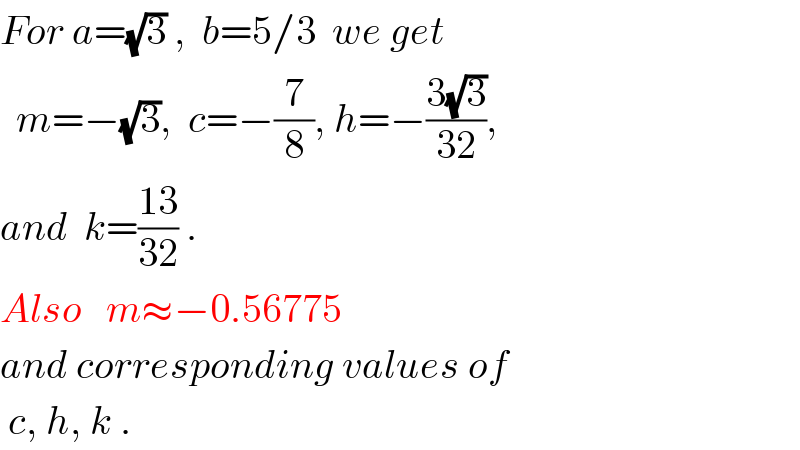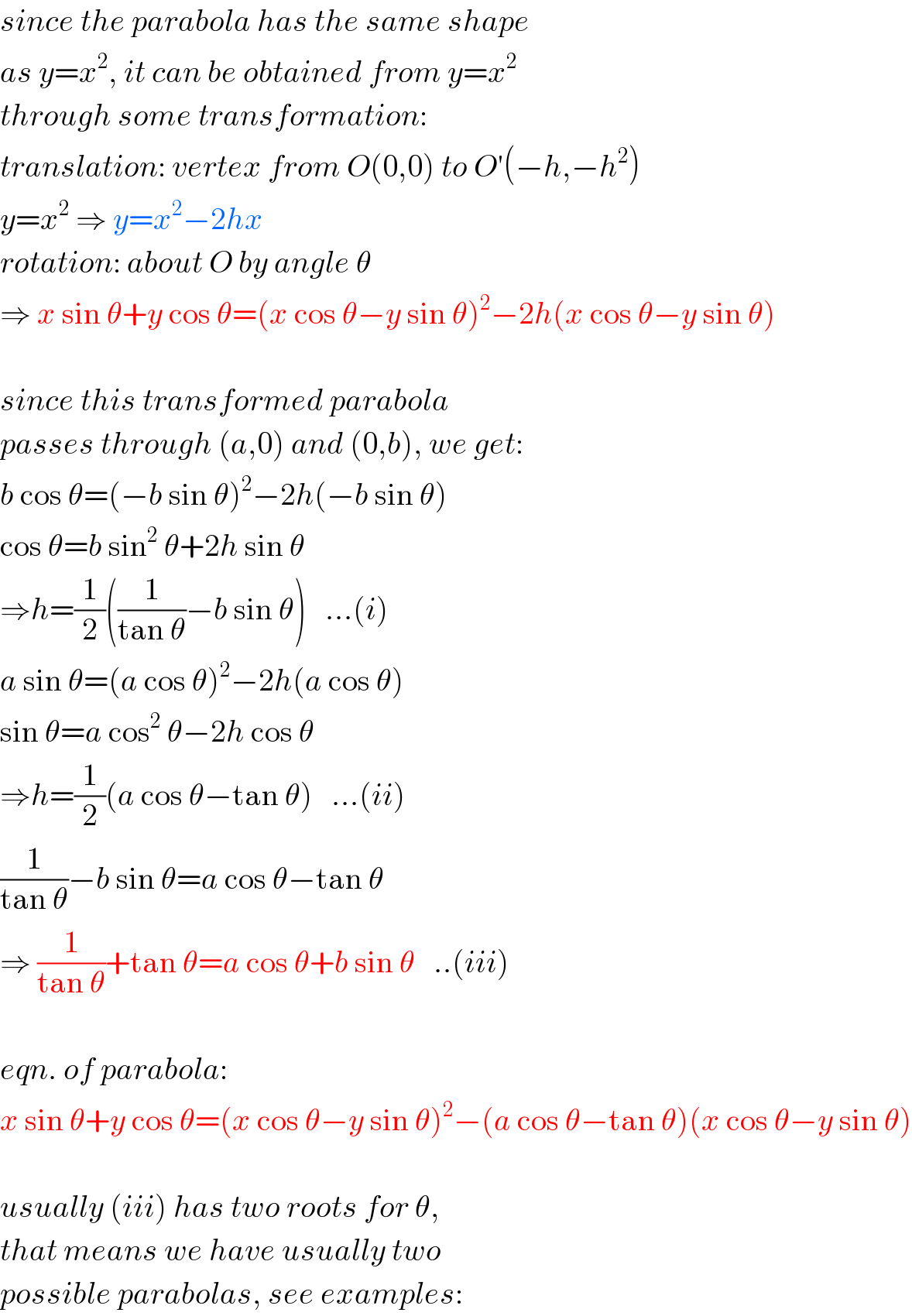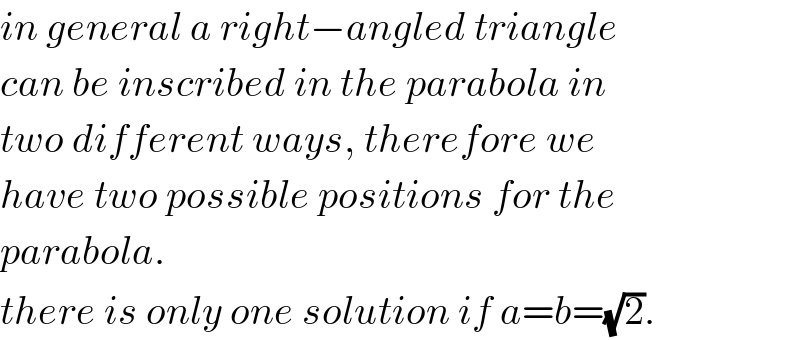
Question and Answers Forum
Question Number 90347 by mr W last updated on 22/Apr/20

Commented by mr W last updated on 22/Apr/20
![the parabola has the same shape as y=x^2 . find it′s equation if it passes through O, A, B as shown. [for some reason ajfour sir has deleted this question. but it is a good question.]](Q90348.png)
Commented by MJS last updated on 23/Apr/20

Commented by TawaTawa1 last updated on 23/Apr/20

Commented by TawaTawa1 last updated on 23/Apr/20

Commented by mr W last updated on 23/Apr/20

Answered by ajfour last updated on 23/Apr/20

Commented by ajfour last updated on 23/Apr/20

Commented by mr W last updated on 23/Apr/20

Commented by ajfour last updated on 23/Apr/20

Commented by ajfour last updated on 23/Apr/20

Answered by mr W last updated on 23/Apr/20

Commented by mr W last updated on 23/Apr/20

Commented by mr W last updated on 23/Apr/20

Commented by mr W last updated on 23/Apr/20

Commented by mr W last updated on 23/Apr/20

Commented by ajfour last updated on 23/Apr/20

Commented by mr W last updated on 23/Apr/20

Commented by mr W last updated on 23/Apr/20

Commented by ajfour last updated on 24/Apr/20

